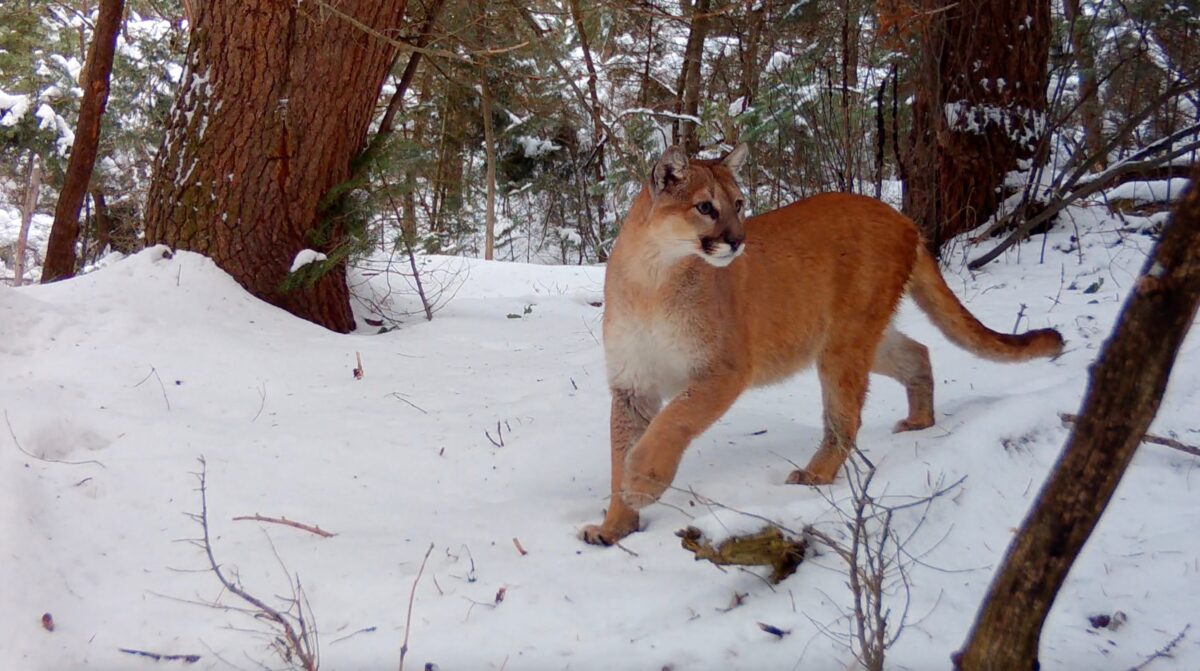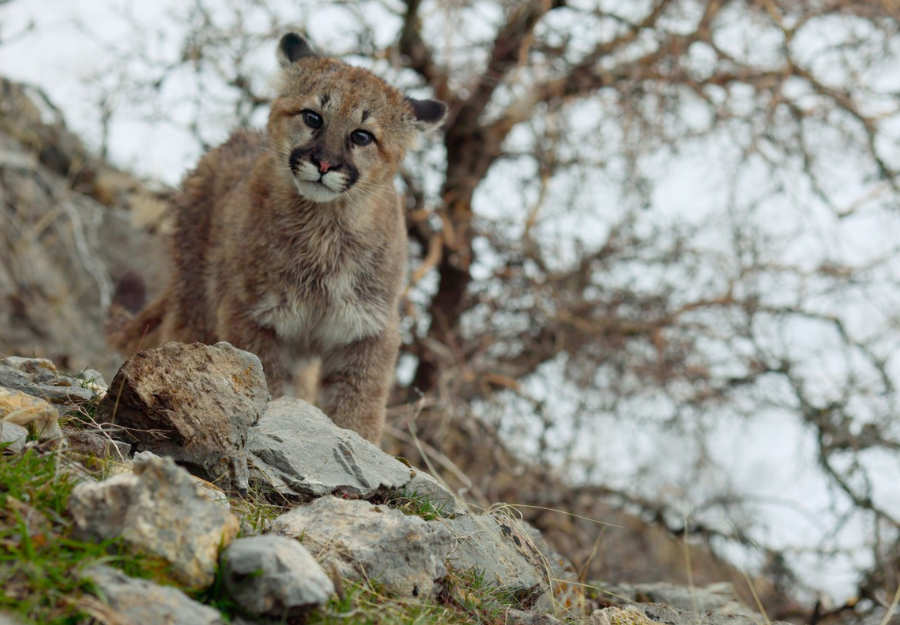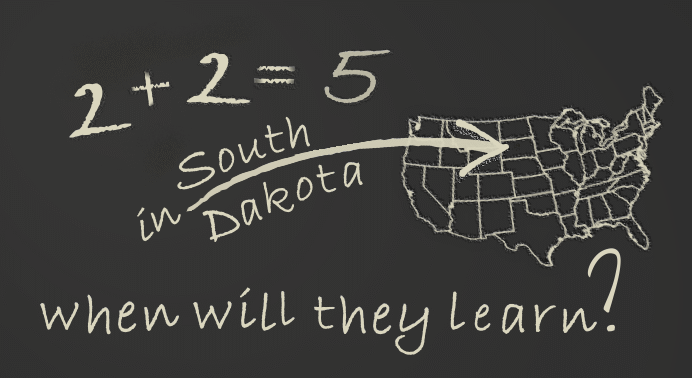
Does 2+2=5 in South Dakota?
Amy Rodrigues, MLF Outreach Coordinator
I’ll be honest, I personally believe that this plan to decimate the state’s still-recovering mountain lion population is purely an early Christmas present for the agency’s hunting pals, wrapped in a few fancy equations and colorful graphs so it looks like science. The plan appears sneaky, is a waste of taxpayer money, and exterminating a species in the pursuit of outdoor recreational fun is morally disgusting.
However, I decided to give them the benefit of the doubt and objectively review their data first to see if at least their math was legit. (Spoiler Alert: It’s not!) Changing personal opinions on how many mountain lions should be in the state is a long and heated debate – still very important – but fixing 2 + 2 = 5 is a much simpler and obvious correction. Emotion aside, let’s just focus on the numbers for now.
The SDGF&P’s entire mountain lion management plan is based on the department’s calculation of the size of South Dakota’s mountain lion population. One seemingly innocent “2 + 2 = 5” miscalculation and the whole house of cards comes tumbling down.
The problem is often that these “2 + 2 = 5” errors are complicated and buried within mathematical jargon . . . and of course state agencies rarely take the time to explain the process and source data in plain English. For the majority of people who don’t speak statistics, it’s common to just take the state’s word for it and assume their lengthy calculations for population estimates are correct.
Well, as a zoologist fluent in statistics, I’d like to show you their mistakes and the reasons why I (and math) believe their own data indicates a maximum of only 111 adult mountain lions living in South Dakota.
If I was able to catch this error only a few minutes into my first read, what other outright errors, slip-ups, and poor judgments went into creating this management plan? I encourage you to consider the basic errors made in their calculations, and to carefully critique and comment on future planning efforts in South Dakota. America’s Lion is of value to all Americans, and for one state to so callously disregard this natural heritage is an affront to all who take science and the environment seriously.
Let’s begin . . .
The Population Information section begins on page 4 of the South Dakota Mountain Lion Management Plan. The data says it’s from 2007-2009 harvest numbers.
No harvest occurred in 2008 due to movement of the harvest season to January 2009. Harvest data for 2009 provided a similar estimate of population size to that of 2007. …endquote
Mountain Lion Management Plan
South Dakota, 2010-2015
The three years of harvest data used for the population estimate is actually just 2007’s numbers, which means they are relying on only one year’s data to assume population trends. SDGF&P justified this choice by saying 2009 was “similar” to 2007 and thus only needed to use results from one of the years. Their harvest data is noted below.
| Total | 19 | 0 | 26 |
| 2007 | 2008 | 2009 | |
|---|---|---|---|
| Females | 16 | No Harvest | 15 |
| Males | 3 | No Harvest | 11 |
Yes, female data was similar (16 to 15) but male harvest (3 to 11) increased drastically! That’s up 267 percent . . . how convenient to ignore the higher harvest year.
But, if we overlook the fact that they are only using one year’s data, and selecting their favorite year to build upon, they still screwed up their calculations.
They use harvest rate to guess population size:
Harvest rate was estimated using number of radio-collared mountain lions harvested divided by total number of radio-collared mountain lions available to be harvested. …endquote
Mountain Lion Management Plan
South Dakota, 2010-2015
Yes, this is a legitimate scientific way to estimate populations through harvest (hunting) data. It assumes what happens to the radio-collared “community” is exactly proportional to what’s happening to all lions in the state. It’s certainly not 100 percent accurate, but it can give a ballpark estimate of the population size.

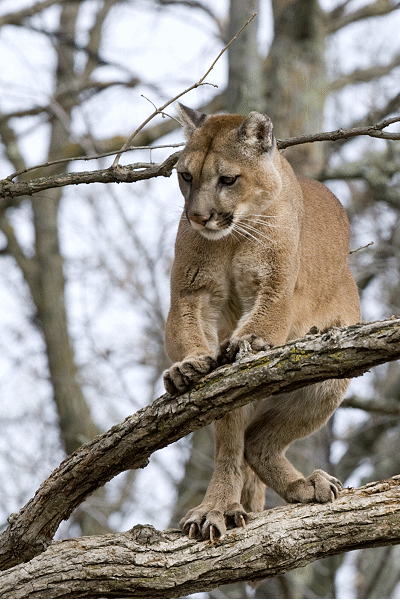
As a hypothetical example of this model: if I have 3 pet cats and 1 gets hit by a car, I would assume 1 out of every 3 pet cats (33 percent) in my region gets hit by a car. If there are 300 pet cats in my neighborhood, then this technique would conclude 100 (33 percent of the total) would be hit by cars.
This method gives a very rough estimate of what’s going on with all the animals, but it’s only one of the tools used by population biologists. The more animals studied, the more accurate the results.
If instead I had 20 pet cats, and still only that 1 was hit by a car, then now my data tells me only 1/20 (or 5 percent) of pet cats are hit by cars. That’s a big drop from 33 percent in my first scenario. These
These numbers are also subject to wide interpretation because they do not indicate whether I live on a busy street, if the cats live indoors/outdoors, if older cats are more likely to wander into the street, distracted drivers, etc, and any other factors that may lead to cats being hit by cars. Multiple mortality factors should always be included when analyzing data of this sort.
But let’s continue with South Dakota’s math.
In 2007, SDGF&P had 35 radio-collared lions. Out of the 19 mountain lions killed by hunters that year, 6 were SDGF&P’s radio-collared research lions. Here’s a breakdown – for reference – of the data from 2007 that will be used to calculate the mountain lion population:
| ALL LIONS KILLED IN HUNT (Radio-collared and not radio-collared) |
3 | 16 | 19 |
| Males | Females | Total | |
|---|---|---|---|
| Radio-Collared Lions Killed in Hunt | 1 | 5 | 6 |
| Radio-Collared Lions Not Killed in Hunt | 14 | 15 | 29 |
| TOTAL RADIO-COLLARED LIONS IN 2007 | 15 | 20 | 35 |
Using the ratio to calculate total harvest, we see:
If 6 out of 35 radio-collared lions were killed (6/35 = 0.171 = 17 percent), that means 17 percent of the radio-collared population was harvested in 2007.
We now make the assumption (just like we did with the pet cat roadkill example) that 17 percent of all adult mountain lions were killed that year.
From the hunting data, we see that 19 mountain lions were killed. Since we are assuming that these 19 lions represented 17 percent of the South Dakota population, according to this technique there should be 111 adult mountain lions in the state (19 is 17 percent of 111).
| ALL LIONS KILLED IN HUNT (Radio-collared and not radio-collared) |
3 | 16 | 19 (17% of 111) |
| Males | Females | Total | |
|---|---|---|---|
| Radio-Collared Lions Killed in Hunt | 1 | 5 | 6 (17% of 35) |
| Radio-Collared Lions Not Killed in Hunt | 14 | 15 | 29 |
| TOTAL RADIO-COLLARED LIONS IN 2007 | 15 | 20 | 35 |
Remember, in their proposed 2010-2015 Mountain Lion Management Plan, SDGF&P wants to kill about 90 mountain lions.
If accomplished, that would bring the adult lion population down to only 21 cats.
For reference, Florida only has about 100 panthers left and because of this small population size, they are federally protected, considered critically endangered and in jeopardy of going extinct. Yet South Dakota could have about the same number of lions and is pushing to legally exterminate them . . . Again!
Back to the math…
South Dakota GF&P decided that 111 unnecessary deaths were a little too few for their liking, and that they would calculate instead using only the female lion population.
“their own data indicates a maximum of only 111 adult mountain lions living in South Dakota
The text on page 5 reads, “In 2007, estimates of population size were generated for the female segment of the population only due to total harvest of 1 radio-collared male.” This makes sense. Only 1 radio-collared male was killed, and just as we saw with my hypothetic pet cat example, assuming trends based on the fate of one individual cat is not good science.
So, SDGF&P calculated the female portion of the population – and this is where they really tripped up!
5 out of 20 radio-collared female mountain lions were killed (5/20 = 0.25 = 25 percent). 16 total female lions were killed that year. If those 16 lions represent 25 percent of the female population, then we believe there are 64 female lions in the state (16 is 25 percent of 64).
Harvest rate for the female segment of the population was estimated at 0.143 (5/35 = 0.143) where 5 radio-collared female mountain lions were harvested of a total of 35 available radio-collared mountain lions. Total number of females in the population was then estimated by dividing total number of females harvested (n = 16) by harvest rate (0.143), which gave an estimate of 112 female mountain lions. …endquote
Mountain Lion Management Plan
South Dakota, 2010-2015
Do you see the problem? Whether it was a convenient typo, incapable employee, or honest mistake, SDGF&P used the wrong number.
They divided by 35 (the total number of female and male radio-collared lions) rather than the 20 (female radio-collared lions), and yet presented the resulting estimate as female lions.
Now, dividing by 35 might be okay, but their own estimation technique requires that the result — 112 — represent both male and female lions.
The ratio stays the same: 5 collared females out of 35 total (male + female) collared lions = 16 females out of 112 total (male + female) lions. Or, 5 out of 20 collared females = 16 out of 64 total females. Either way, their numbers only let them assume 112 total lions or 64 females . . . not 112 females.
Had they either looked at the whole population or calculated the female population correctly, they would have concluded there are only an estimated 111 or 112 adult mountain lions in the state of both sexes.
Remember, their population estimate assumes that hunting is the only cause of death and that kittens will not die as a result of orphaning. Both assumptions are obviously untrue. But even given their poor assumptions, if they want 150 adults, they are going to have to INCREASE the population to get there!!!
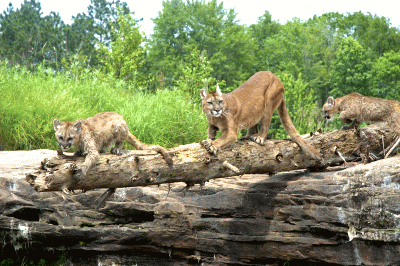
Another interesting point is that SDGF&P assumes that 70 percent of the population is female (see why this is probably an error, too!). If there are 64 female lions, representing 70 percent of the population, this means there may only be 91 adult mountain lions in the whole state (64 females, 27 males). I may actually be cutting them some slack and overestimating by saying there could be 112 adult lions in South Dakota. But hey, I’m only using their data!
The South Dakota mountain lion management plan also uses other sketchy assumptions about the number of kittens, survival rates, and territory size shrinking despite less food. I encourage you to learn more about lion population estimation, and to challenge these assumptions.
All the studies show that food abundance dictates territory size: the less food, the larger the territory. Please see MLF’s official comments to the plan and learn more about lions on the South Dakota state summary page.
If South Dakota’s plan to kill 80 to 100 adult mountain lions is approved, they could exterminate the entire mountain lion population! They did it once before. Through this mountain lion management plan, all 78 adult lions could be killed (if there really are even than many to begin with) and the 64 predicted kittens listed above would all be less than one year old and unable to survive without their mothers – despite what SDGF&P thinks.
If any wildlife agency can’t demonstrate that they can calculate 2 + 2 = 4, they shouldn’t be trusted to manage our wildlife.My only thought now is dear god I hope the numbers are wrong and there actually are more lions out there . . . somewhere.
While I may not agree with all of their assumptions, the following edits simply fix the mathematical errors and give the real version of the management plan South Dakota’s biologists intended to produce. With my edits in bold, page 5 of South Dakota’s Management Plan should read:
“During 2007-2009 when sufficient radio-collared female mountain lions were available to estimate the population post harvest, an estimate of harvest rate was generated for the female segment of the population. Harvest rate was estimated using number of radio-collared mountain lions harvested divided by total number of radio-collared mountain lions available to be harvested (Skalski et al. 2005). Estimates from 2007-2009 were compared to those generated via population reconstruction to adjust temporal change in the mountain lion population. In 2007, estimates of population size were generated for the female segment of the population only due to total harvest of 1 radio-collared male. Harvest rate for the female segment of the population was estimated at
0.1430.25 (5/3520 =0.1430.25) where 5 radio-collared female mountain lions were harvested of a total of3520 available female radio-collared mountain lions. Total number of females in the population was then estimated by dividing total number of females harvested (n = 16) by harvest rate (0.1430.25), which gave an estimate of11264 female mountain lions. The following assumptions were used to estimate reproduction: 1) 50 percent of females were with kittens; 2) survival of kittens was 0.67; and 3) litter size was 3 kittens/litter (based on field data collected over the past 5 years [Thompson 2009, B. Jansen, unpubl. data]). Thus, the number of kittens added to the population was11264 females multiplied by 0.5) which equals5632 females with kittens. The5632 females with kittens were multiplied by 3 kittens/female for a total of16896kittens born. This number was multiplied by the survival rate of 0.67 to estimate total number of kittens added to the population or11364 kittens. The sex ratio of the population was estimated at 70% females, based on observed data and those from other populations (Logan and Sweanor 2000), which provided an estimate of adult and transient males of4827. Thus, total number of males and females was16091 and this estimate was adjusted by multiplying by survival rate for males and females of 0.86 (Thompson 2009), which gave13878 adult mountain lions. Thus, total population was estimated at13878 adults and11364kittens or251142 mountain lions.” …endquoteAmy Rodrigues
Mountain Lion Foundation
Corrected version of South Dakota’s
2010-2015 Mountain Lion Management Plan




 Facebook
Facebook Twitter
Twitter Send Email
Send Email